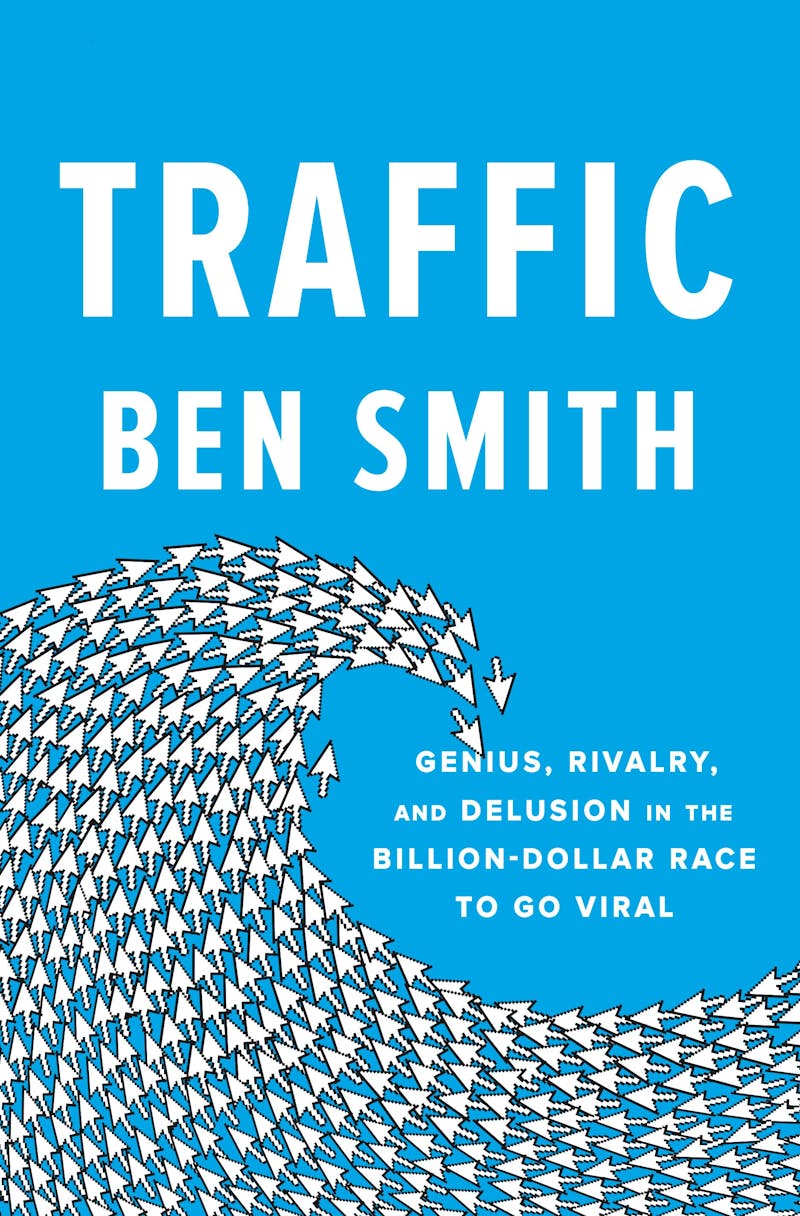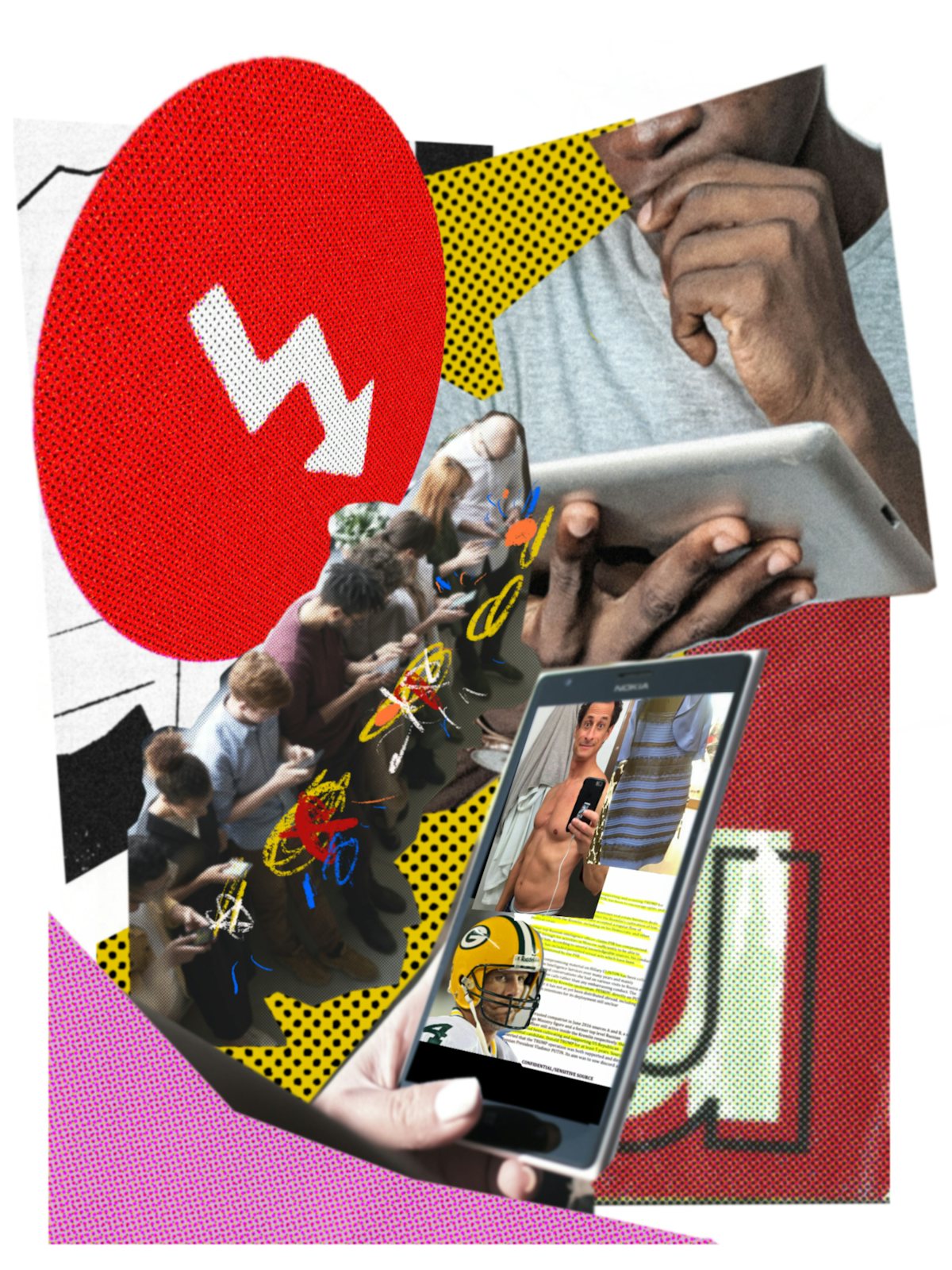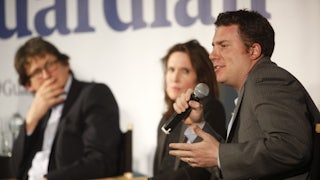“What Cheese Are You?” was a quiz that appeared online in February 2014. BuzzFeed, the digital media company that published the quiz, returned to the same theme in December 2016 (“What Delicious Cheese Are You Based on Your Zodiac Sign?”), February 2018 (“Everyone Has a Cheese That Matches Their Personality—Here’s Yours”), August 2019 (“This Personality Quiz Will Reveal What Kind of Cheese You Are”), January 2020 (“What Kind of Cheese Are You?”), and October 2022 (“Only *I* Know What Type of Cheese You Are in Your Soul”). BuzzFeed’s latest variation on the form launched in December 2022 with the declaration, “As Strange as It Sounds, There’s a Cheese That Describes You to a T—Take This Quick Quiz to Find Out What It Is.” (After nearly a decade of cheese quizzes, it did not sound strange at all.)
Like, I suspect, many others, I’ve wasted a small portion of my life answering these quizzes. But they’ve provided no certainty. Just the opposite, in fact: They’ve shown my identity to be oozingly mutable. At times, I’ve been a Camembert; at others, a cheddar, a Parmesan, a mozzarella, a Monterey Jack. “As I write this letter, the world is witnessing a grave humanitarian crisis in Russia’s attack on Ukraine,” BuzzFeed founder and CEO Jonah Peretti wrote in his introduction to the company’s annual report in March 2022. “During these times, our mission to spread truth, joy and creativity on the internet has never been more important.” But if BuzzFeed exists to spread truth, what are the truths it deals in? What cheese am I, really?

In reality, of course, I am as unsimilar to a block of cheese as BuzzFeed is alien to the mission of propagating truth. Informational chaos, not narrative clarity, is the internet’s guiding epistemological mode. The digital era has staged a corporate contest not for truth but for attention—a malleable asset that can be put to countless uses, whether it be to convince readers the 2020 election was stolen or to show them how their preference for Netflix over Hulu means they’re totally a Gorgonzola. All content now is designed to be shareable, to get us to click—but shareable for what? Once you have caught the public’s attention, what do you do with it? What social, political, or cultural purpose does a page impression, a retweet, a video view serve?
The degree to which digital media has—or more often, has not—grappled with these questions animates former BuzzFeed News editor Ben Smith’s new book, Traffic. Through the stories of BuzzFeed and Gawker, Smith aims to show how the media, high on the early internet’s spirit of creative adventure and freedom, got hooked on traffic, unleashing volatile social and cultural forces it could no longer control. This was, Smith claims, the “false promise of traffic”—the book’s grand theme. But if his book portrays an executive class mostly unbothered by the potential consequences of the digital era’s popularity contest, it also suggests that journalists—in particular those named Ben Smith—remain confused about their own role in this shrill and data-saturated new world.
Jonah Peretti helped create The Huffington Post in 2005, then launched BuzzFeed a year later. But, as Smith tells it, Peretti has been thinking deeply about online attention’s basic purpose since the earliest days of the internet. In 1996, shortly after graduating from the University of California, Santa Cruz, Peretti published a long paper in the online journal Negations with the title “CAPITALISM AND SCHIZOPHRENIA.” Drawing on Lacanian and post-Lacanian psychoanalytic theory and sounding very much like one of his own future critics, Peretti argued that “late capitalism” both “accelerates the flow of capital” and “accelerates the rate at which subjects assume identities.” Brands, he continued, had exploited the “visual cacophony” of popular culture—including traditional print publications, cable TV, and the nascent internet—to sell stuff: The acceleration of visual culture enabled the acceleration of consumerism. The paper was not simply diagnostic but prescriptive: Might it not be possible, Peretti wondered, to reorient visual culture in a different direction, toward the formation of identities that “oppose those offered by the capitalist media”? There was, he concluded, “no reason” that “radical groups” could not use “similar methods” to those advancing hyper-consumerism to “challenge capitalism and develop alternative collective identities.” Indeed, the mediated anti-capitalist resistance was already underway: Peretti identified queer activists, slackers, and postmodern artists as among the groups who had begun to turn capitalism’s methods on itself.
The young Peretti saw media, including the new world of online media, as a way to advance a political agenda, and it’s clear that his own ideological sympathies lay on the left. Peretti’s dalliance with activism continued into his late twenties, but eventually he drifted away from politics. Today, Peretti is perhaps best known for his company’s cynical mining of the internet’s “visual cacophony” for profit: BuzzFeed’s stock has underperformed since the company went public in late 2021 but spiked in January of this year, after Peretti announced that the company will use ChatGPT to help create content, a move that felt like the final myoclonic jerk of a body corporate nearing its end. Just as he, as an undergraduate, had thought possible, Peretti did indeed succeed in carving out a space in visual culture for alternative identities, but he did it for clicks, not anti-capitalism. On BuzzFeed today, you can find quizzes that ask, “How Gay Are You?,” “What % Lazy Girl Are You?,” and “Which Up-and-Coming Artist Are You?” The queer activists, slackers, and artists who offered the young Peretti hope for a “more inclusive” society are now simply meat for the maw of capital, data points to feed the machine that converts attention into cash.
Smith glosses this transition as a natural shedding of youthful enthusiasms. Peretti, he claims, “cared too much about the medium to fully embrace the message” of activism and diverted his energies instead to the study and eventual commercialization of traffic, the new coin of the online realm. But a close reading of that early, critical academic paper shows that Peretti understood what Smith, despite two decades working in online media, appears to miss: that in a hyperkinetic media culture like ours, the medium becomes the message, and form shapes content. If the angriest, loudest, most narcissistic, and most aggressive voices are today the ones that get heard, that’s in part because online speech’s value is measured by its popularity, by its traffic—and traffic rewards conflict.
At first, the pursuit of traffic served Peretti’s venture well, but as the internet matured, form tightened its grip over content, and online discourse metastasized, BuzzFeed’s cutesy listicles and feel-good quizzes lost their once-irresistible luster. Peretti understood the power of traffic to reshape the structure of culture but ultimately misjudged the direction of its effect on society. Valued in 2016 at a peak of $1.7 billion, BuzzFeed now has a market capitalization of $205.9 million; recent years have seen its once-vaunted news division gutted and several overseas offices shuttered. The company’s decline offers a signal lesson in the perils of pursuing traffic for its own sake.
In an aesthetic sense, today’s internet seems less the spawn of BuzzFeed than of another media venture that vied with Peretti’s project for online supremacy through the late 2000s and early 2010s: Gawker. The rivalry between Peretti—goofy, numerate, American, straight—and Gawker founder Nick Denton—brash, anti-elitist, English, gay—lies at the heart of Traffic. To call this a rivalry involves some exaggeration. Smith works hard to convince us that animosity grew between Peretti and Denton as the competition for traffic between their two companies intensified, but the evidence for this atavistic feud amounts to little more than a handful of tame tweets: In March 2010, for example, Denton called Peretti “a bit of a dick,” and Peretti replied, “I’m a dick to u bc of social mirroring.” Napoleon calling Talleyrand shit in silk stockings this was not.
Still, there is an interesting contrast to be drawn between the two properties, and it’s one that remains pertinent today. Peretti felt that traffic was simply “a resource to be exploited,” Smith writes. BuzzFeed’s growth model—to “quantify human emotion on social media and feed it back to an audience with a combination of art and science, then capture the nearly infinite scale and perpetual motion the new media offered”—was correspondingly vacuous, failing to account for the fact that in a scandalously unequal society with suddenly ubiquitous tools for instantaneous mass communication, the strongest human emotion online was always likely to be rage. Denton, on the other hand, saw traffic as a “sign of quality” and believed the “underlying mechanics of the internet would point toward a raw new truth.” Nominally, this credo gave Gawker Media a straightforwardly old-fashioned journalistic mission: to expose hypocrisy and hold the powerful to account.
But the manner in which Denton’s writers prosecuted that mission helped forge a new grammar—built on doxing, shitposting, dogpiling, and dunking—that remains dominant in online discourse today. Traffic deftly charts this transition, showing how Gawker went from aggressively reporting on Silicon Valley, say, or fashion media to posting dick and cleavage pics, of the famous and non-famous alike, simply because it could. In the company’s most infamous episode, Owen Thomas, a reporter from Gawker blog Valleywag, publicly outed tech billionaire Peter Thiel, triggering the chain of events that would eventually lead to Gawker’s demise. That the company’s fatal blow was self-inflicted feels oddly fitting. Lust for traffic drove Gawker’s success, but it also made Denton and his staff voyeuristic and cynical, inducing a kind of collective delirium: A relentless cycle of exploitation and self-exposure caused several Gawker writers to flame out in spectacular public fashion, anticipating the “spiraling” and “meltdowns” that remain a canonical spectacle of online life today.
In Smith’s account, both Peretti and Denton were randomly pressing buttons and waiting to see what would happen, but only Denton had some notion of online attention’s ultimate purpose. Denton felt that it was “the internet’s most radical ideology” that “information wants to be free, and that the truth shall set us free.” He was partially right about the first claim—most of what’s ghoulishly known as “user-generated content” remains free online today, though media companies eventually recognized the power of the paywall—but dead wrong about the second: Ubiquitous information led not to truth but truths, a profusion of conflicting accounts of reality in which the very notion of “the facts” was delegitimized and converted into a cultural battleground. Informational overload has not freed society but taken it hostage—a dystopia far from either Peretti’s or Denton’s early imaginings, though tonally much closer to peak Gawker than BuzzFeed.
All history is selective, but the focus on Gawker and BuzzFeed means that Smith’s account of the societywide race to go viral necessarily omits and underemphasizes important players. Big tech platforms like Google and Twitter score drive-by mentions, and while Facebook, Disney, and The New York Times are given considerably more space, they decorate, rather than drive, the narrative. Other influential new media companies of the century’s first two decades, like Vox and Vice, are mostly absent; the rise of the individual platform-hosted “creator” is hardly mentioned at all. These omissions and elisions leave the book feeling incomplete, and they elevate media to a central place in a story to which it appears increasingly peripheral, as a mere pawn of the techlords. Belatedly, many journalists have accepted that “the news” is not theirs alone to direct—a troubling realization, given their profession’s Olympian sense of its own importance, but one from which Smith appears to have exempted himself. A broader focus to Traffic might have offered a clearer sense of the real shift of the past two decades, toward an informational culture in which journalists have lost their prestige as cultural gatekeepers and the freedom to post is without limit—in which we are all users, and all get used.
Given Gawker Media’s eventual demise—Denton sold his company to Univision in 2016 after Hulk Hogan, with funding assistance from Thiel, successfully sued over Gawker’s 2012 publication of a video showing the wrestling icon having sex with his best friend’s wife—and the recent evisceration of BuzzFeed News, Traffic feels in some way like history written by the losers.
In place of analysis, Smith gives us a whirlwind nostalgia trip. The rise and fall of Traffic’s two protagonists provide the vehicle for a mini-history of the internet. Gamergate, the dick pics of Brett Favre and Anthony Weiner, The Dress, the Steele dossier, snark versus smarm, the top-down food video as a hegemonic cultural form: Smith gives them each their moment to shine, like a jazz band leader calling on his soloists.
And what, ultimately, of Smith himself? BuzzFeed, we know, needed traffic to grow. But when traffic was no longer enough, it needed the one thing better: It needed Ben Smith. Plucked from Politico to launch BuzzFeed’s news division in 2011, Smith not only witnessed much of Traffic’s action unfold online; he also participated in it behind the scenes. But it’s not until around halfway through the book that Ben Smith, Journalist, appears. He makes his entrance on the same page as Anthony Weiner’s penis, a coincidence that feels deliberate: down one path, dick pics, infidelity, and social perdition; down the other, journalism, transparency, trust, the promise of a society with its pants pulled up.
Smith joins the story in 2011, after Peretti and BuzzFeed chairman Kenny Lerer invite him to lunch to discuss the idea of helping BuzzFeed get into the news game; the invitation arrives thanks to a recommendation from an older journalist who remembers Smith as “a kid who had impressed him,” though the referee is unsure whether the kid is “still any good.” The aw-shucks sentimentality with which Smith paints his own role in the story—just a kid with dreams of working hard!—is one of the book’s many recurring stylistic tics. Eventually, these tics accumulate in such a way that they can be represented in the signature form of BuzzFeed itself:
10 SIGNS YOU’RE SO THE BOOK TRAFFIC BY BEN SMITH
1. When you’re stuck for a narrative transition, you reach for banalities like “Meanwhile the traffic climbed” or “Facebook grew and grew.”
2. You love ending sentences with a colon and the word: traffic.
3. You devote an unusual amount of effort, in a book that’s mostly light on character description, to pointing out that right-wing media guru Andrew Breitbart was overweight (or, to use your own words, a “frenetic, overweight fleabag of a man,” a “hyperactive pigpen of a right-wing lunatic, whose belly hung out from underneath his ratty T-shirt”).
4. You never miss an opportunity to remind us that you, Ben Smith, are a devoted father to young children. (“I was reading a fairy tale to my young son when I realized what was happening.”)
5. You love to describe business meetings you were invited to, especially if they involved a fancy lunch or—cool dad alert—getting high afterward.
6. You often gesture melodramatically toward a dark future via the little-did-they-know parenthetical (“It was one of the earliest flares of what would, a decade later, become social media”).
7. You know how to talk like the cool kids. (Barack Obama’s mid-2000s popularity online “was, in its way, the sideboob of politics.”)
8. Often this does not … work out so well. (“Jonah had created the site with his little sister Chelsea, who had moved to New York to make it in stand-up comedy. Cringe!”)
9. You are strangely apolitical, despite politics forming the backdrop to much of your narrative.
10. You have never seen a corporate cliché that didn’t deserve a home in narrative nonfiction. (Denton “backed into politics through Jezebel”; New York Times executive David Perpich “got in on the ground floor” of an early 2000s music startup.)
Traffic is less interesting as a history of digital media—much of the book’s raw material comes from other historical accounts, a debt acknowledged in an endnote on sourcing—than as a record of its author’s evolving thinking on the role of journalism online. Smith left BuzzFeed in 2020 to become the media columnist for The New York Times; last year, he left the Times and launched the media venture Semafor, designed, in Smith’s own words, to cater to the world’s “200 million people who are college educated, who read in English, but who no one is really treating like an audience, but who talk to each other and talk to us.”
Reflecting in Traffic on his own mistakes and flirtations with online notoriety during eight years at the helm of BuzzFeed News—such as the controversial 2017 decision to publish the Steele dossier, which included claims of collusion between the Russian government and Donald Trump, or his decision to hire future plagiarist and far-right media star Benny Johnson—Smith seems eager to demonstrate growth, to advertise his learning. “Perhaps I should have thought a little more” about people sharing the Steele dossier online without BuzzFeed News’ copious disclaimers, he muses at one point. But the limp introspection of these postmortems jars with the excitability of the passages where he recounts BuzzFeed’s explosive growth (“The traffic was back”; “I went to stand in the middle of the newsroom and watch the traffic flow”; “I loved the traffic”), suggesting a basic conflict that the book leaves unresolved.
In the internet age, should journalism aim to expose the truth or attract attention through any means? Smith does not say. A “deep confusion” across BuzzFeed “about what BuzzFeed News was for” represented, in his view, the seed of the news venture’s eventual failure. But a similar confusion appears to infect his own perspective on the media’s basic mission. At times, he appears to endorse the view that journalism is a form of entertainment, that it’s all part of the internet’s great game. At others, he aligns himself with Denton’s version of journalistic “transparency,” which he thinks mostly means “leaks and aggressive reporting.” In the book’s wimpy finale, Smith positions the next stage of his career as a kind of professional apology tour, heroically devoting himself to the task of rebuilding media and making it “resistant to the forces we helped unleash.” But in an increasingly dizzying informational universe, with the pressure to stand out and make a scene only growing, how exactly will trust in the media be rebuilt? Smith’s contention in Traffic that, by the early 2020s, the internet “had become, merely, society itself”—which misses, once again, the critical interactions between technology and society, the power of each to influence and shape the other—leaves little to suggest he has an answer.
As both witness and participant, Smith occupies an unusual role in the story of the digital media revolution. If he feels any doubt about the objectivity of his account—if he feels that his ability to reliably chronicle the rivalry between BuzzFeed and Gawker is in any way compromised by his longtime employment by the former—he does not show it in the pages of Traffic. Instead, Smith flutters through the book apparently untroubled by this obvious conflict of interest, his portrait of Peretti verging at times on hagiographic, and his attention to financial disclosure airily casual. He waits until almost the final page to inform us of the stake he held in BuzzFeed (he made “what seemed like a small fortune” from slowly selling his shares after the company went public), and twice he describes his former boss, in the evacuant lingo of Silicon Valley, as a visionary who had “seen around a corner.” But Peretti’s eyesight was not so special that he noticed the financial cliff BuzzFeed was about to walk off as it prepared to go public. His failings—his opposition, beginning in 2015, to BuzzFeed employees forming a union, for instance, or the numerous rounds of layoffs in the late 2010s that stemmed from his company’s irrationally rapid growth—are uncritically excused as a reflection of his utopianism, “a kind of magical thinking.”
These might seem like small criticisms, but they go to the heart of what it takes to tell a story that people can trust, to be a credible reporter—the essence of journalism, and the mission to which Smith’s new venture is supposedly directed. In truth, what Smith does these days is less journalism than journapreneurialism, a hybrid activity that involves reporting on power while aspiring to wield it.
Semafor launched last year with the promise that it would bring readers “an unparalleled level of journalistic transparency through innovative new forms.” The fruit of this promise is subheadings: Each Semafor story (or “Semaform”) usually includes a label for the discrete sections devoted to news, the reporter’s viewpoint, and contrasting perspectives. Within the 16 or so months of its life to date, the new media company has accepted $25 million in funding, struck several big advertising deals, and reported live from the World Economic Forum’s annual meeting in Davos, Switzerland. Having witnessed—and chronicled—how venture capital, social media, and digital advertising have distorted and cannibalized journalism over the past two decades, Smith now hopes that angel investors and ad sales will help his social media–savvy online news service restore trust in the very institution these forces have deformed. The media can rehabilitate its image in the eyes of a suspicious public by deepening its ties to the elites. (One can already picture the swing voters of suburban Phoenix racing to their devices to check the next Semaform from Davos.)
Whether this reflects hubris or delusion is unclear, but, like so much of what passes for media innovation today, the project feels strangely rote—like another turn of the ignition in an old car that won’t start. While Smith is off partnering with the one percent to save journalism, the internet will roll on, a permanent frenzy of addictive ephemera. And when it eventually comes to be written, the story of the media’s future will probably read much like the story of its recent past: They fucked around, and we found out.






